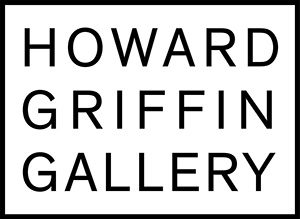Giacomo Bufarini
Man is God


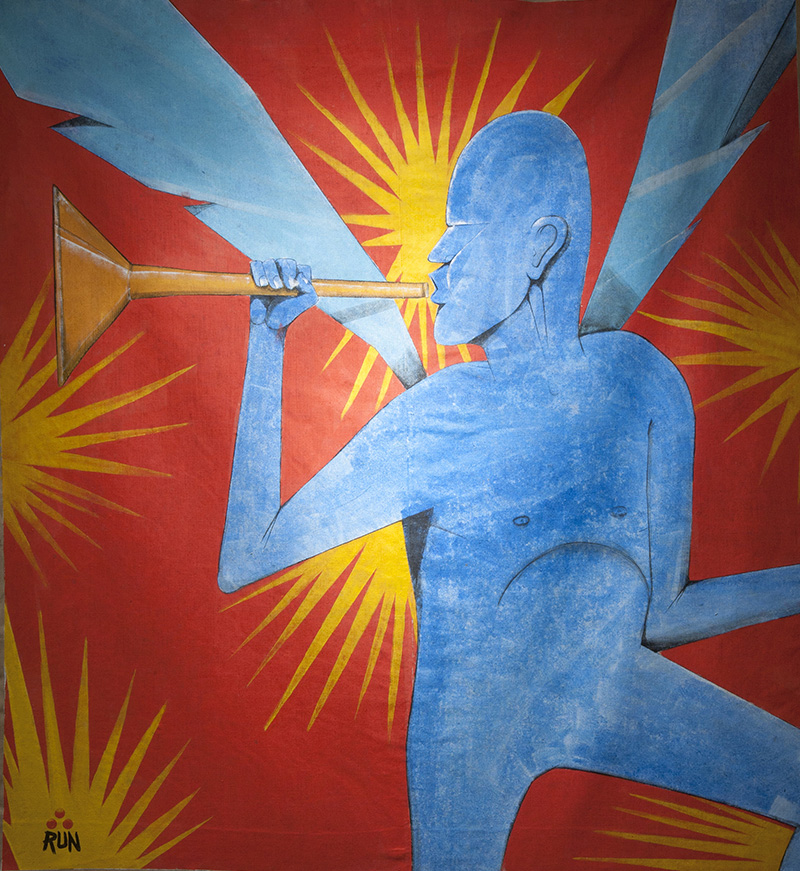
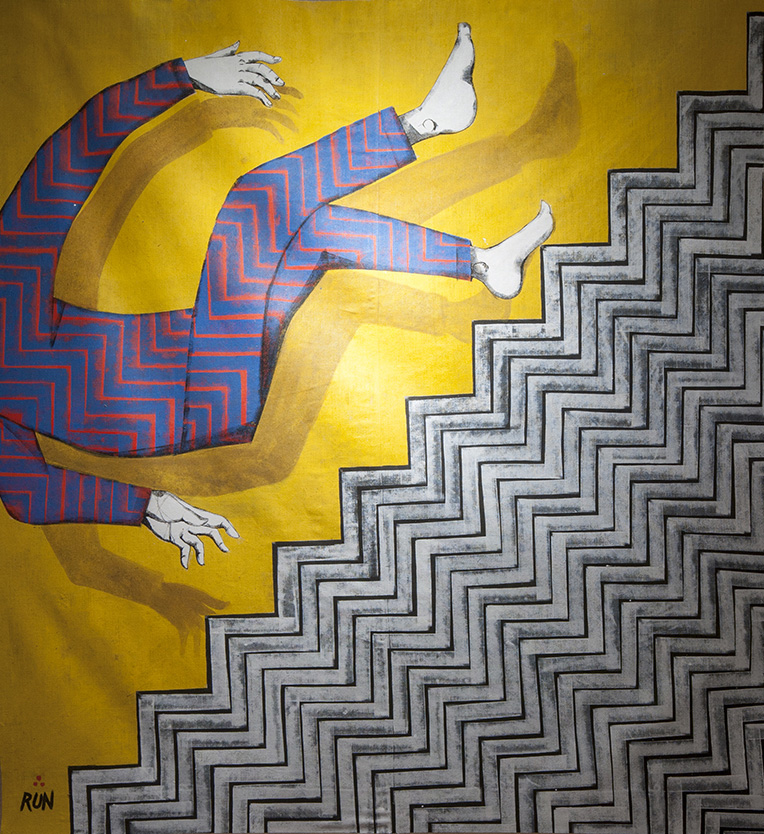
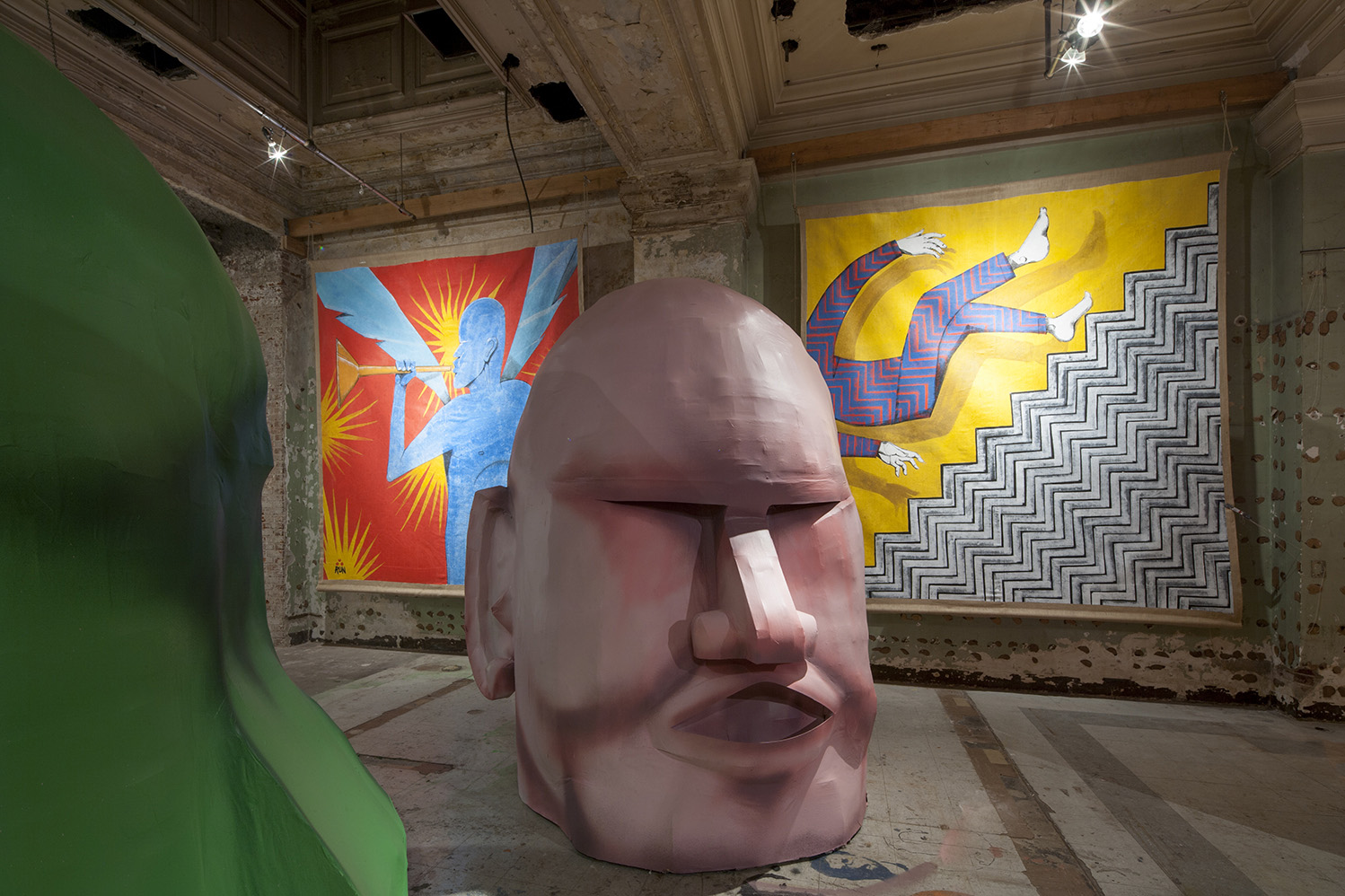
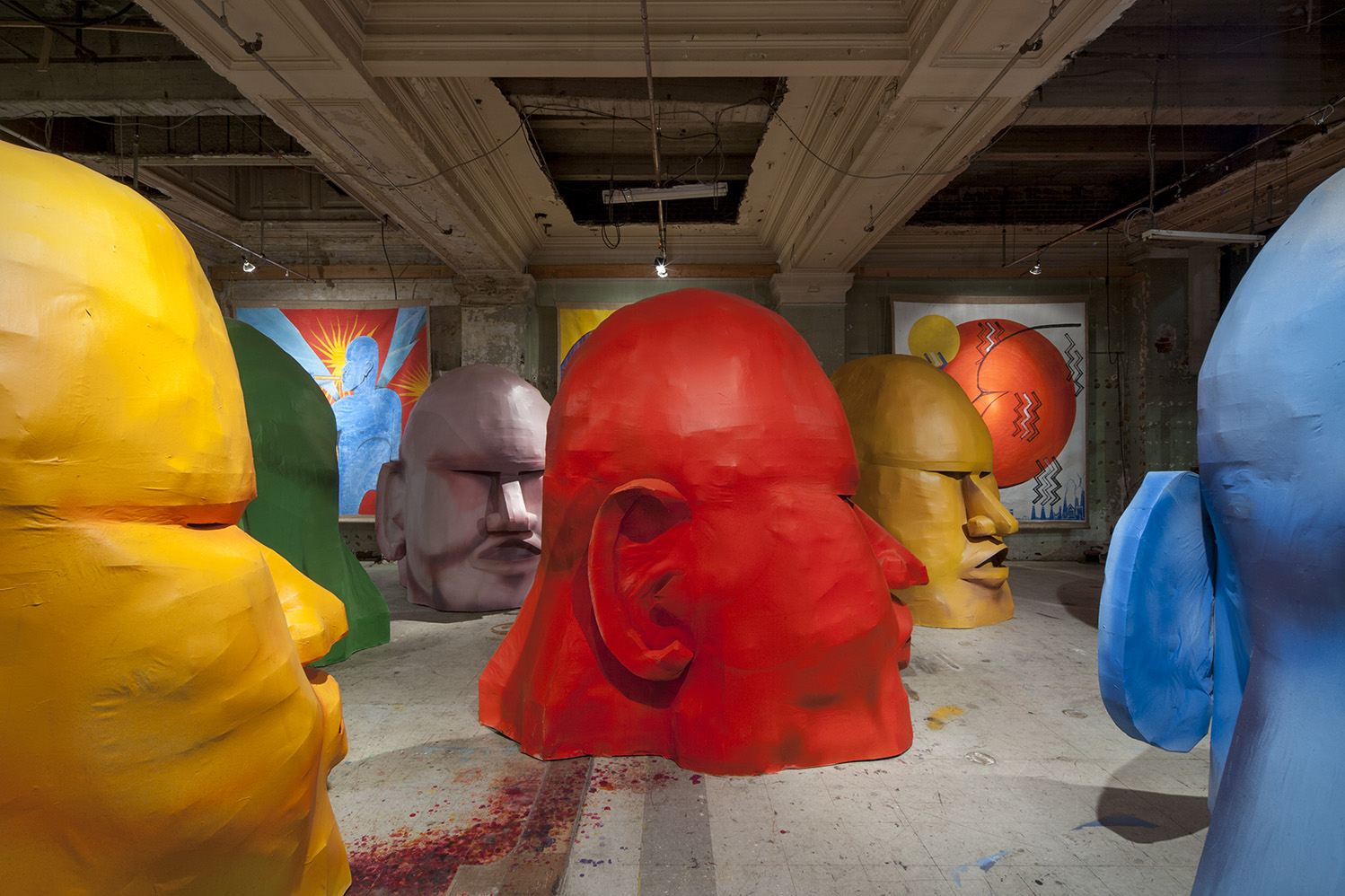
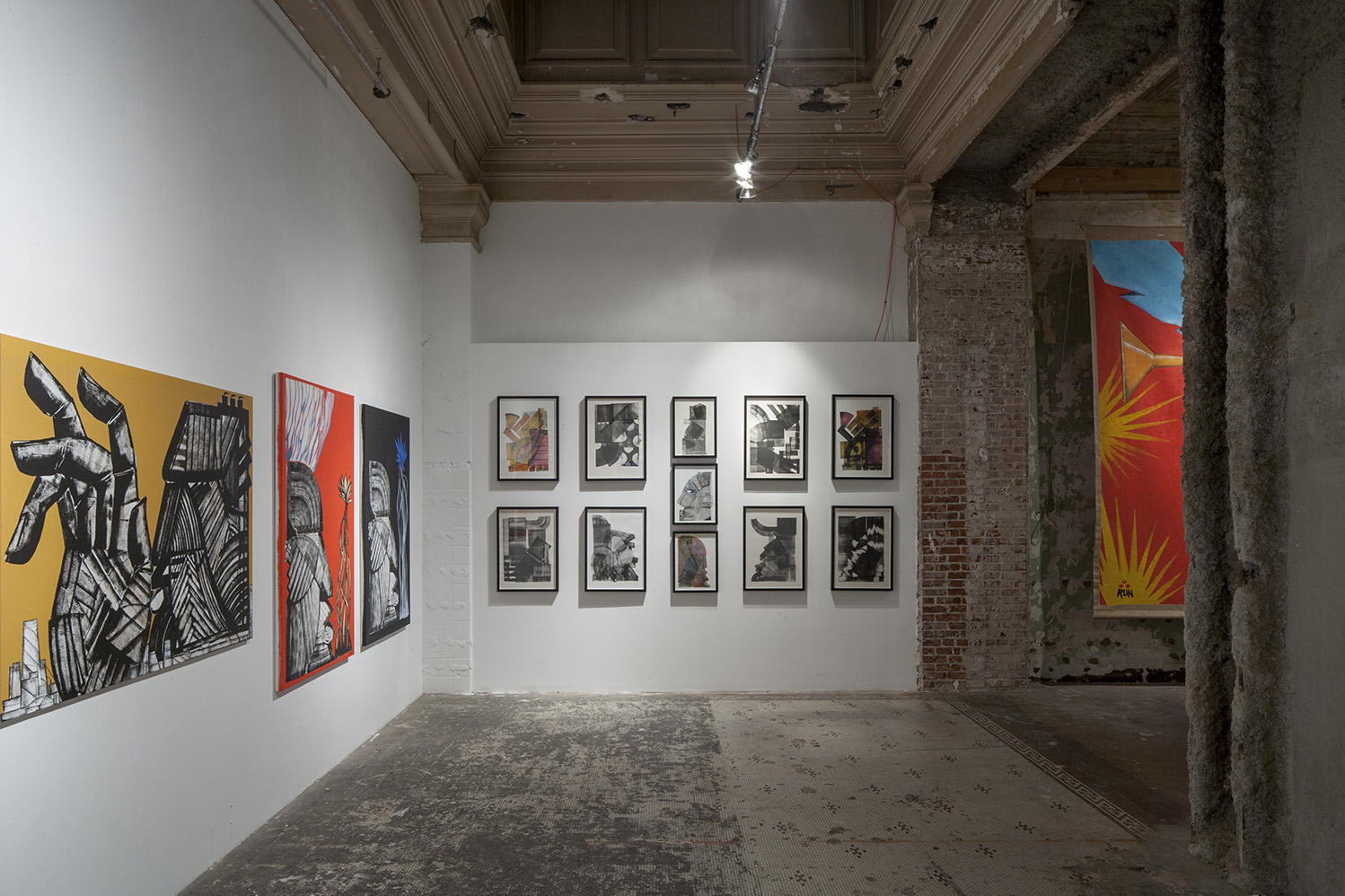

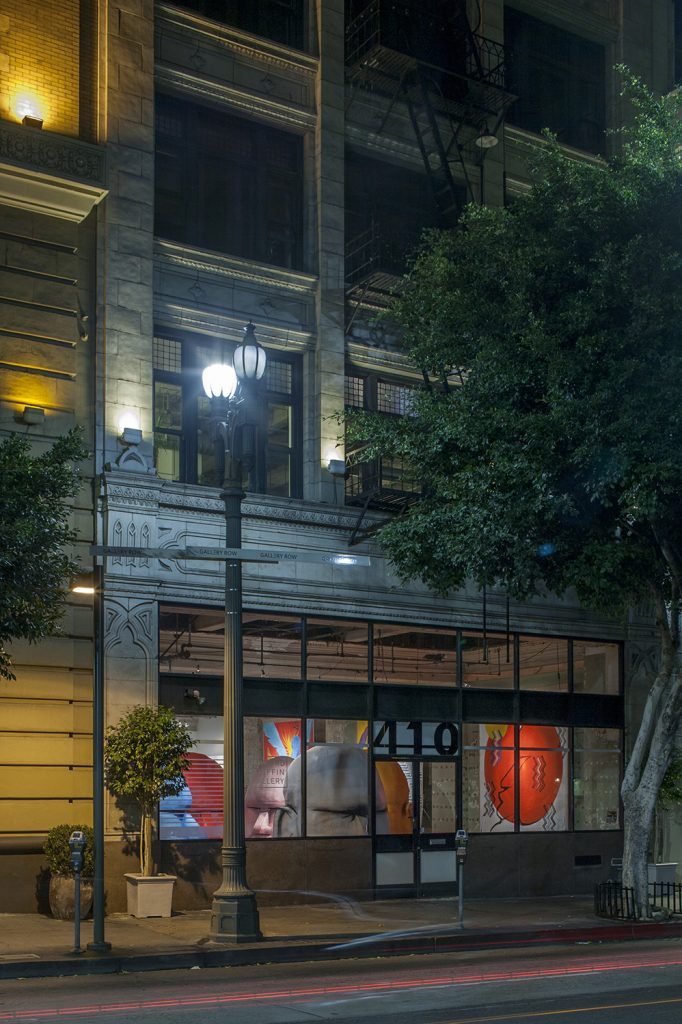
Man is God
RUN
Los Angeles, 2015
In Man is God artist Giacomo Bufarini presents imagery and sculptural works that oscillate between the neolithic and the modern, creating monuments and relics that look back to the ancient world to find a new wisdom for our modern times. Bufarini seeks to present a world where man and nature are intimately connected as part of an indivisible whole. The exhibition explores and investigates the origins of human civilisation and anthropology, subjects which have long held fascination for the artist. In the main room of Howard Griffin Gallery, the artist presents an installation of monumental sculptural heads and large ceremonial banners that cover the walls from floor to ceiling.
Visually these grand works reference Pagan symbolism and iconography transposed onto our modernity, inviting us to consider our true origins as a species and our true nature as human beings. Man is God concerns the lost spirituality of man; through Bufarini’s evocation of a dark, mysterious and ancient past reminiscent of mythology and folklore, he questions the ongoing rush of modernity. In the 21st Century, through his mastery of nature and new technology, it is Bufarini’s view that man has become his own God.
Walking among Bufarini’s works is to discover a sacred site of mysterious ancient forms. Bufarini asks us to understand this unknowable civilisation through its imagery, questioning how it came to be here and for what purpose. It recalls a time when humans organised themselves into small tribes, each with its own distinctive culture. The monolithic forms are exhibited alongside a series of canvas works that are visually reminiscent of tribal flags, referencing the natural world through imagery of the crescent moon, the sun, flora and fauna. Alongside these, Bufarini has created monotypes that represent his heads in an abstract way, suggestive of the rudimental building blocks of anatomy. Totemic symbols are suffused with rich pagan echoes; abstract curves and entwining lines knot into natural and anthropomorphic forms. Time is ambiguous; like walking into a silent shrine, time appears to stand still and collapse.
The exhibition can be seen to comment on how modernity has changed society and humanity. Today, thousands of ‘tribes’ coalesce in one place. Cities have become a melting pot for different peoples and cultures. Our human society is now indescribably complex, yet our basic nature remains the same. In today’s world, the inexorable trend towards development, progress, urbanisation and technological advancement has separated humans from nature, both the natural world that surrounds us and our own internal human nature. The idea of God that man has created as a justification for our domination over the natural world is increasingly seen to be a fiction by some. Modernity has created man-made structures upon which everything relies; Man is God aims to take us back to our long-forgotten origins, to a time when nature and man were connected through ritual and devotion.
